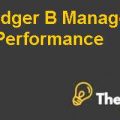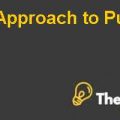
Supply Chain Management
Introduction
One of the most flattering effects of evolution is the continuous unwrapping up of fresh as well as fruitful prospects. In addition, these effects of evolution also include constant branching and expansion process. Business practices of the future will be defined in a new unit of analysis: (the supply chain not the individual organization); which will become an effective unit of competition. The economic climate has been changing over the recent years and firms are overhauling their activities to keep up with the velocity of change.
Evolution of Purchasing and Supply Change Management
In the past, purchasing was often categorized as the duty of the administration department. Later, it fell under a specialized department of procurement so that the workforce with specialized skills in purchasing could handle this task effectively. Continuous change in process of supply chain and purchasing in an organization has been a topic of debate since the 1990’s. This debate can be traced back to early beginnings when the textile industry in USA formed the Crafted with Pride in 1984. They found astonishing increase in the inventory cost and the product positioning in the supply chain process when they were asked to evaluate the supply chain of the organization. This incident gave birth to the QR (quick response) strategy which was a partnership between supplier and retailer, so that they were able to respond more efficiently to consumer needs. Other significant changes also took place such as the Electronic Data Interchange (EDI) that totally changed the nature of the information transfer across different spectrums of supply chain; this resulted in the reduction of costs substantially (Ernst and Young, 2009).
The current role of supply management can be categorized into four major parts.
- Leading
- Exceeding
- Achieving
- Lagging
Leading category includes safely harnessing the power of supply markets for a competitive edge. Consequently, this will influence the battle strategy and will give a competitive advantage to the organization; which will ultimately motivate demand and increase the business.
Exceeding category involves the relationship management, money management, demand and supply responsibility that will support the business strategy and will reduce the unwanted demand activity, immediacy and variability. Achieving category involves the cost modeling and restructuring, supplier market evaluation and management, supply management and project management. This category is basically used for reducing the costs in the business model that also includes negotiation with the supplier. Lagging category involves site level tactical sourcing, ordering and expediting, which will result in the right product at the right time in the right place (Rhonda R., 1999).
Role of Purchasing Management
Purchasing is a specialized task that requires a skill set in order to perform it effectively and efficiently. With the global scenario changing rapidly, innovation and technology are instantly becoming the tools of tomorrow; the purchase departments are also evolving with these circumstances by keeping these rapid changes in their view. The role of purchasing is totally distinct as compared to the past; when the purchasing power used to lie in the hands of the administration. Following are some job roles that purchasing department has to handle:
- Forecasting the demand for products or services.
- Managing the inventory level to maximize efficiency in the supply chain.
- It should serve as a link between different parts of the supply chain for the transfer of information.
- Prospecting new suppliers as well as build and preserving relationship with the existing supplier.
- Prospecting and evaluating for the best alternative among suppliers in terms of value, quality, delivery time and price.
- Evaluating the services provided by the supplier and providing recommendation on the bottlenecks of the service quality.
- Processing payments, preparing invoices and keeping a record of contract files.
- Estimating and calculating price trends for future activities.
- Constructing and implementing organizations purchasing strategy.
- Training and oversee the work of other staff members.
- Attending trade conferences and meetings for prospecting of suppliers.
Skills for Purchase Management Professionals
Skills required by the purchase department professional are entirely unique in contrast to other management personnel’s. Some of the skills possessed by purchase department professionals are listed below.
- First ability that purchasing personnel has is the ability to comfortably talk on price and negotiate on their own terms. Non purchasing people do not possess the information and knowledge to carry out such tasks.
- Second ability is the patience level of the people to carry out the tasks on delivery, cost estimates and detailed requirements.
- Third ability is the detailed product specific information that the purchase department personnel should have so that he/she doesn’t settle for vague description of the supply order. This is done in order that the process can be finished with the maximum possible effectiveness.
The purchase people should have the ability to construct positive relationships with the suppliers so as to become more profitable. They should work collaboratively with the suppliers in order to minimize supply costs and design innovativeness in their supply .............................
This is just a sample partial case solution. Please place the order on the website to order your own originally done case solution.











